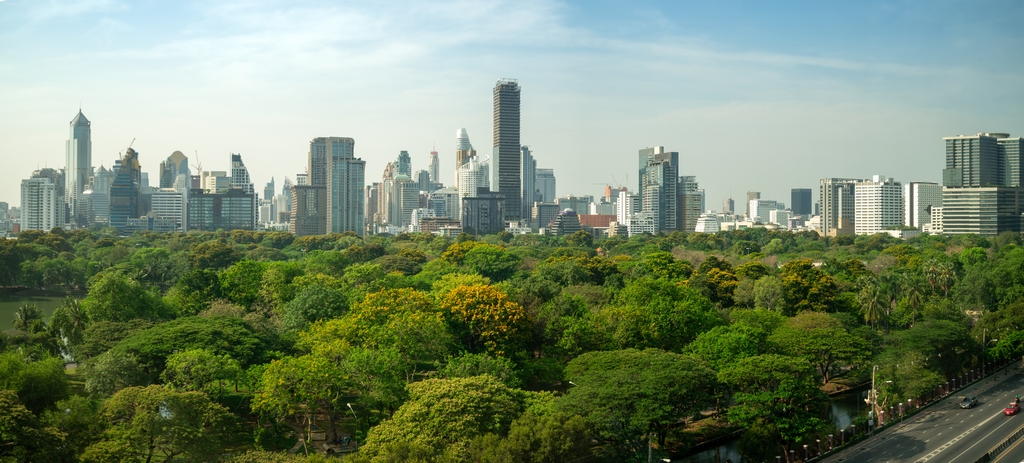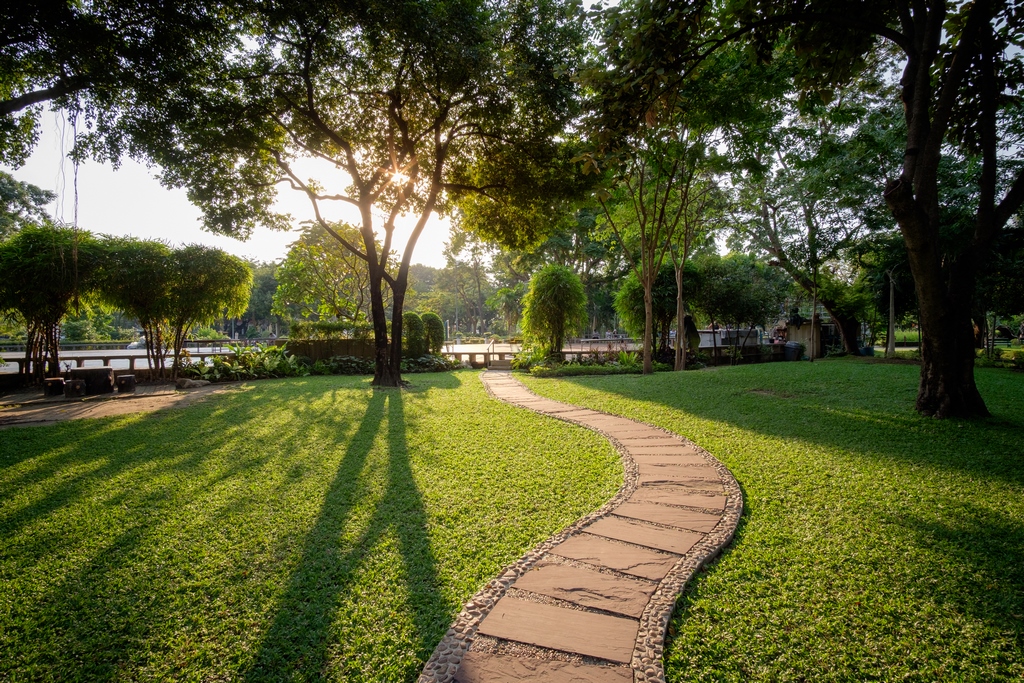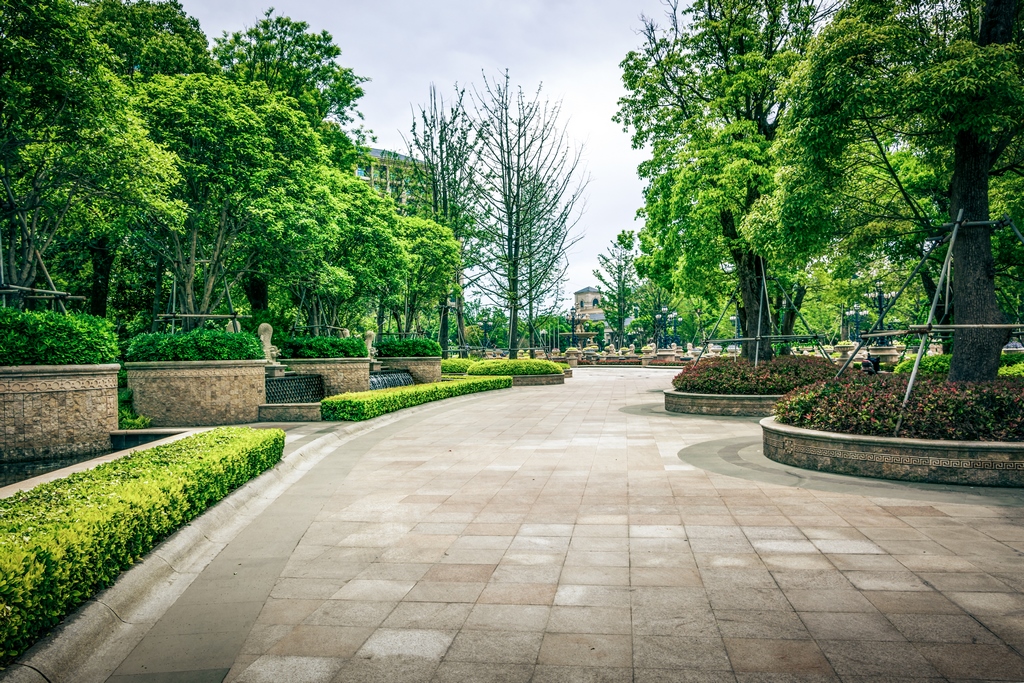Johnny Appleseed was Right: Embrace Urban Trees!


The presence of trees in cities makes life better, a fact made provable by a wide set of both measurable and purely intuitive positive effects. From economic benefits to positive emotional and social impacts to the pleasure of birds and bees, urban trees are worth hugging.
By Eric Herman
Trees in urban setting offer a surprising set of wide-reaching benefits. According to the Colorado-based Institute for Environment Solution (IES) trees can generate measurable ROI of more than three times their planting and maintenance costs; and, as they grow, the benefits only increase, rather than diminish over time, making them a uniquely long-term and wise investment.
Much like the presence of water in urban settings, properties with trees, or those near them in public spaces, have measurably greater real estate value than those that are absent trees. Businesses in and around trees tend to have comparably increased clientele, and even happier employees. Far beyond the financial benefits of urban forests, trees in cities offer a host of social, psychological and ecological benefits.
Here’s a compelling list complied published by the IES defining the advantages of forestation in otherwise concrete jungles.
PUBLIC OPINION
Studies show that consumers prefer to shop in business districts with tree-lined streets and sidewalks. Just as music and lighting delight, trees located near businesses improve shoppers’ imagery, comfort, and appeal of a place. Tree-lined business districts can even incite the perception of higher product quality and value.
Increased Consumer Patronage: Research shows that consumers will travel farther and more frequently to shop in business districts with trees. They are willing to spend more time and pay more money (up to 12%) for all categories of goods, including shaded parking. (naturewithin.org)
Increased Commercial Property Value: Landscaping increases the value and enhances the sales appeal of commercial real estate. Commercial areas with trees have higher occupancy and lease rates than identical properties lacking such natural amenities.
Reduced Energy Costs: Depending on species and planting location, trees can reduce building energy use and associated costs by acting as both natural air conditioners and insulators. During the summer months, trees can lower peak air temperatures 2-9 °F by releasing water through their leaves and shading surfaces.
A single large tree can cool an area as effectively as ten room-size air conditioners operating all day. During the winter, trees can lower heating costs by providing a natural windbreak.
SOCIAL BENEFITS
Increased Social Ties: Trees are an important part of any residential outdoor space. By drawing people out of their homes, trees create an opportunity for neighbors to interact and develop community relationships.
Improved Mental Health: Urban environments can contribute to mental fatigue and stress. Including trees in urban areas can create a restorative and peaceful environment that helps people recover from stress and fatigue.
Increased Perceptions of Safety: In studies conducted by Sullivan and Kuo in 2001, people living in inner city neighborhoods gave the highest safety ratings to areas that were densely planted. In addition, people living near trees reported feeling safer than those living in more stark surroundings. Research suggests that people feel safer as a result of increased activity in green outdoor spaces, which deters crime.
Improved Worker Productivity: Studies suggest that time spent in natural environments may reduce mental fatigue and improve a person’s mood and their capacity to function. Once a person returns to work, they are able to concentrate better on the task at hand. A person feels more alert and optimistic.
ENVIRONMENTAL BENEFITS
Trees temper the effects of weather conditions: Trees absorb solar radiation, providing cooler cover for living organisms. Tree species with dense foliage, such as certain evergreens, are particularly useful at easing strong winds when planted strategically. Additionally, trees collect storm water, which reduces the effects of runoff and the chance of flooding from severe rainstorms.
Trees Moderate the Local Climate: The outdoor temperature is cooler near trees, which release water vapor into the air and provide shade. Trees mitigate the urban phenomenon known as the heat-island effect – a term used to describe elevated temperatures in cities resulting from the abundance of heat-retaining surfaces, such as concrete and asphalt, and a lack of vegetation. The process of releasing water vapor has been found to reduce peak summer temperatures from 2° to 9°F.
Trees Improve Air Quality: The bark and leaves of trees absorb several air pollutants, including ozone (O3), carbon dioxide (CO2), carbon monoxide (CO), and sulfur dioxide (SO2). In addition to absorbing pollutants, leaves filter dust and other particulate matter from the air.
The capture of CO2 is of particular importance, because it is a significant driver of global climate change. In one year, an acre of mature trees can absorb the equivalent amount of CO2 emitted from driving 26,000 miles.
As an example, the gross amount of carbon captured by trees in Golden, Colorado is about 637 metric tons annually, with an associated value of $14,500. While filtering pollutants from the air, trees also emit oxygen that sustains life, trees are also responsible for emitting volatile organic compounds (VOCs) that contribute, albeit minimally, to street-level ozone (smog).
The emission of VOCs varies depending on the species of the tree planted. Although trees minimally contribute to ozone formation, an increase in tree cover generally results in an overall decrease in smog.
Trees Reduce Noise Pollution: Unwanted noise can lead to personal stress, and worker productivity loss. Strategically planted trees can act as noise buffers, reducing noise by five to ten decibels (approximately 50% to the human ear).
Trees Improve Water Quality and Reduce Soil Erosion: Trees assist in recharging the supply of groundwater by reducing evaporative loss, and improve water quality by collecting chemicals and pollutants on the surface of their leaves. Root systems beneath trees hold soil in place and slow the effects of storm flash events. Trees break the impact of rainfall, allowing the ground below to absorb precipitation more gradually, while preventing severe soil erosion caused by runoff.
Trees Help Conserve Energy: Strategically placed trees can reduce the energy needed to heat and cool buildings, thus reducing greenhouse gas emissions and financial costs. Estimates of potential energy savings range from 7% to 40%, depending on the site placement, trees’ shape and density, and the species of the tree planted. Reducing energy demand also reduces the pollutants generated by the utility plants producing electricity.
Trees Provide an Essential Habitat for Wildlife: Trees house an abundance of life, and they are critical to the reproduction cycles of many species. Trees supply wildlife with protective cover from the elements and provide nesting materials for various species.
Trees Can Provide Forage: Fruit and nuts nourish humans and animals. Apples, chestnuts, oranges and peaches are just a few favorites that have become staples in the diets of many.
Opening image by Radu Mod | Shutterstock; 2nd image by Blue Planet Studio | Shutterstock; 3rd image by Dmitri Polonsky | Shutterstock; 4th image by John_T | Shutterstock












